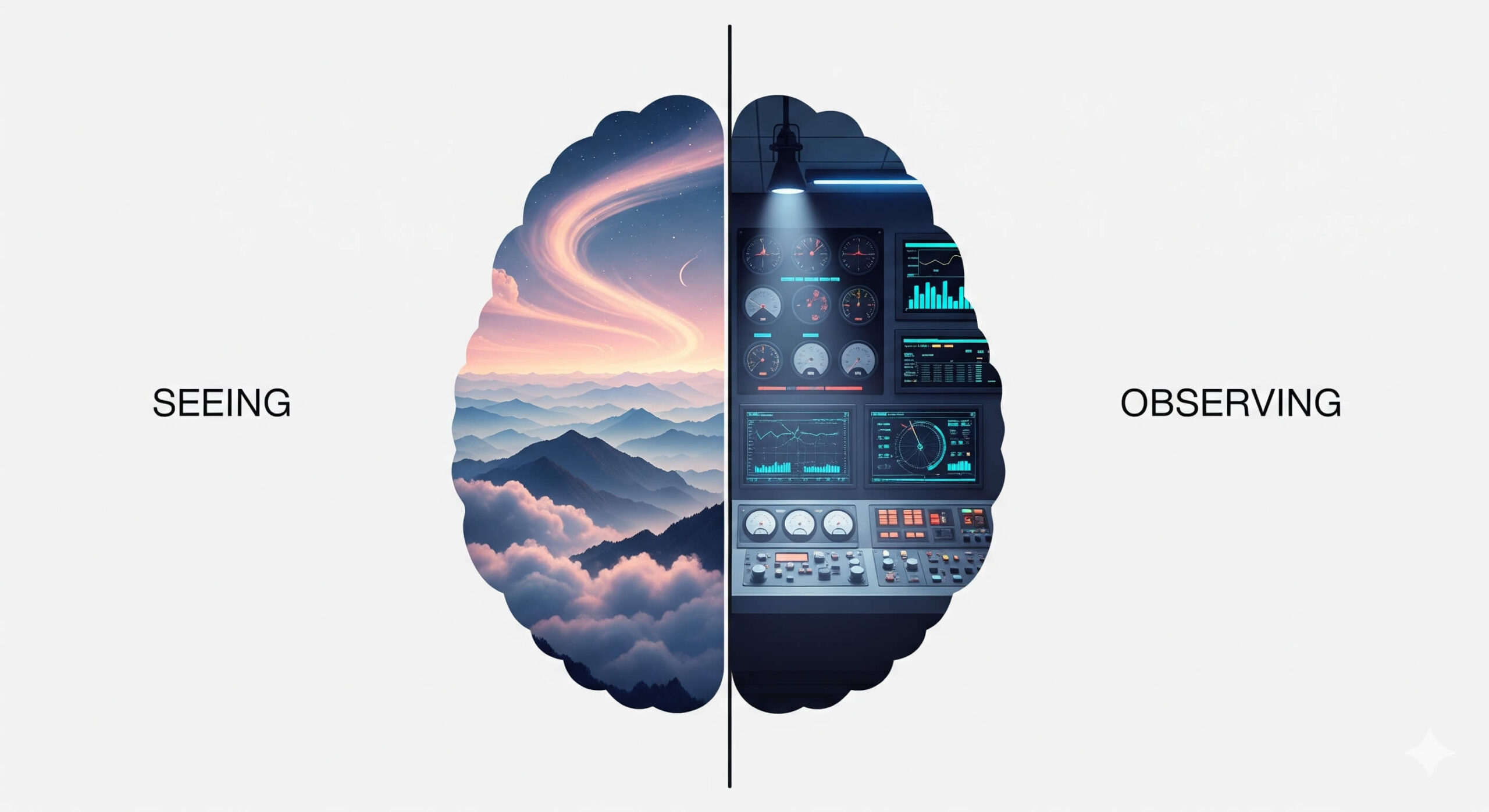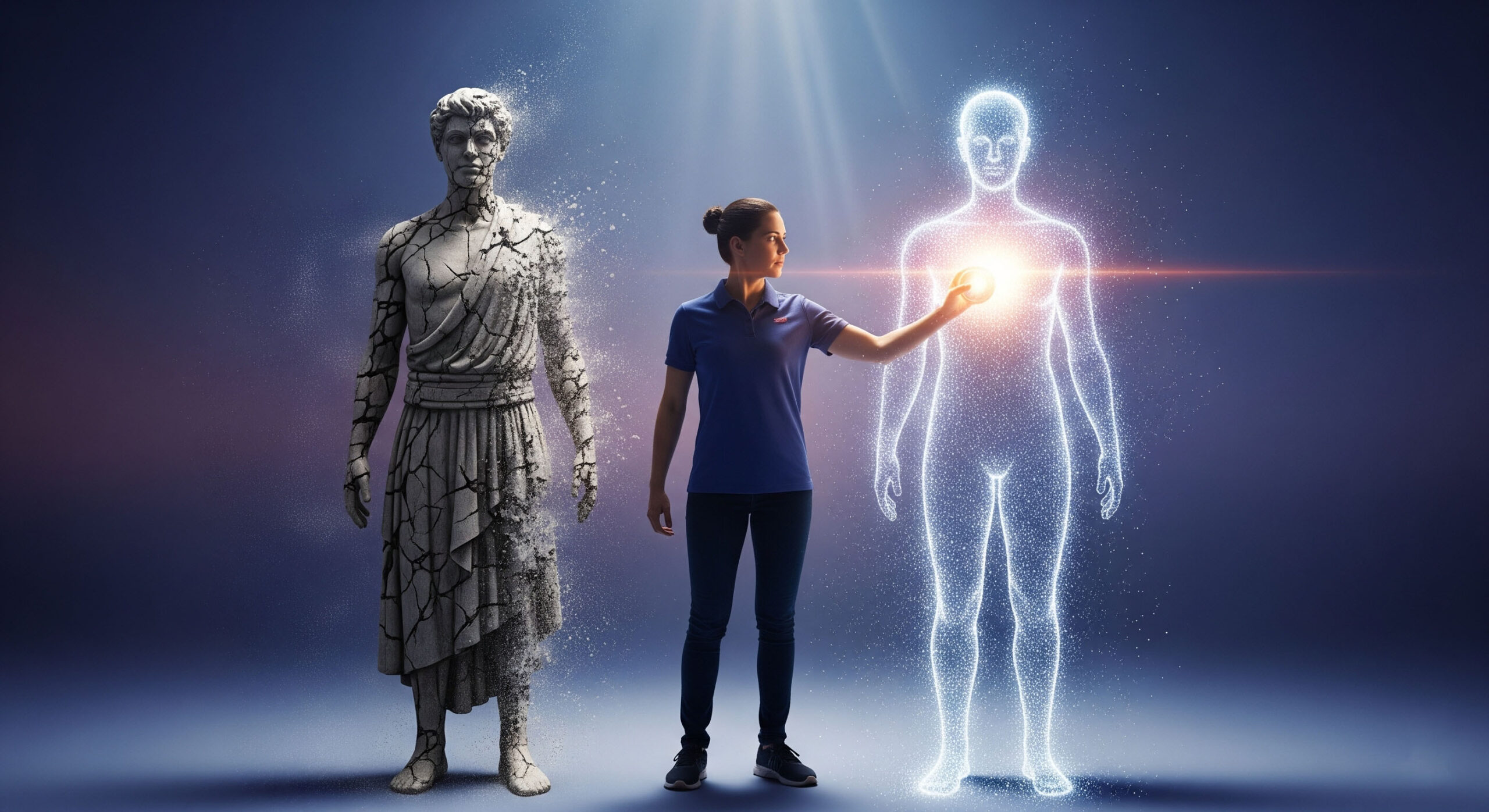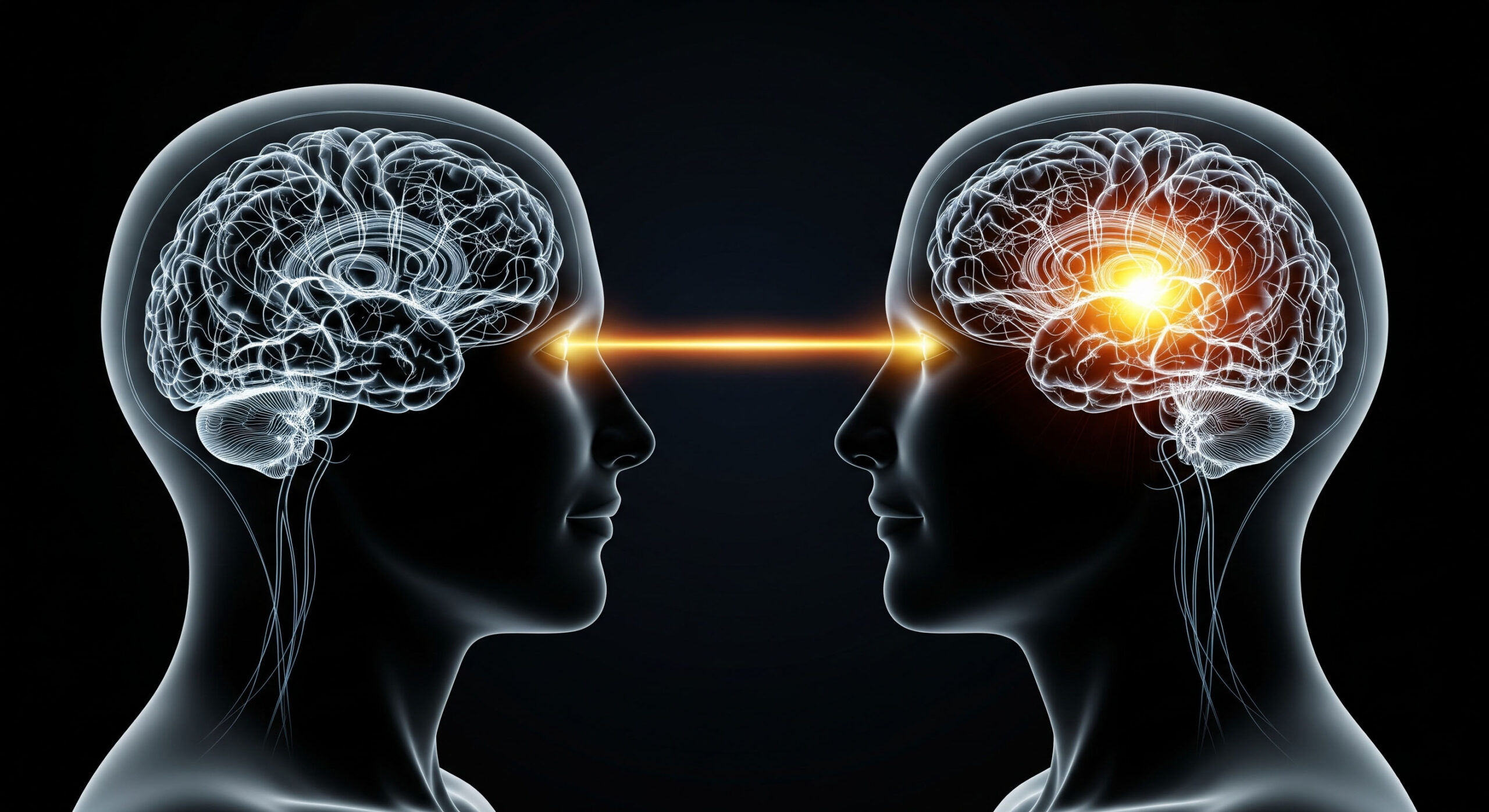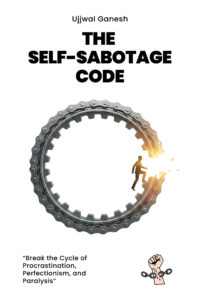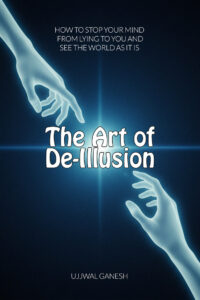Imagine two people standing before the Eiffel Tower.
The first is a tourist. They arrive, raise their phone, and snap a quick selfie. They check the photo, post it to social media with a caption, and within sixty seconds, they move on, their mind already focused on the next item on their itinerary. They have successfully “seen” the Eiffel Tower.
The second is an artist. They find a bench and sit for an hour, sketchbook in hand. They don’t just see a tower; they notice the intricate latticework of the iron, the way the afternoon sun casts shifting shadows, the texture of the old stone at its base, and the expressions on the faces of the people below. They are not just seeing a landmark; they are truly observing it.
Both people looked at the same object, but they had fundamentally different experiences. This difference isn’t about artistic talent or attention span; it’s a reflection of two distinct and competing networks in the brain. Understanding this neurological tug-of-war is the key to moving from a life that is passively seen to one that is actively and vibrantly observed.
The Two Brains in Your Head: The Autopilot and The Pilot
While you only have one physical brain, you effectively operate with two different “minds” or modes of thinking, each driven by a distinct neural network.
“Seeing” is the Autopilot’s Job
As we’ve discussed, passive “seeing” is the work of your brain’s autopilot, the Default Mode Network (DMN), or what I call the Ghost in Your Head. The DMN is a master of efficiency. Its job is to recognize patterns based on past experiences and make quick predictions. When you’re just “seeing,” your brain isn’t analyzing the raw data from your eyes; it’s pulling up a mental file labeled “tree” or “car” or “Eiffel Tower” and saying, “Yep, that’s one of those.”
This is incredibly fast and energy-efficient. It allows you to navigate the world without being overwhelmed. But it comes at a cost: you don’t see what’s actually there. You see a generic, simplified model created by your past.
“Observing” is the Pilot’s Job
True, deep observation engages a completely different system: the Executive Control Network (ECN). Sometimes called the Task-Positive Network, the ECN is your brain’s conscious pilot. This network, primarily located in your prefrontal cortex, is the part of you that activates for focused, goal-directed tasks. It’s what you use when you’re solving a difficult math problem, learning a new language, or consciously aiming your attention to gather detailed information from the world.
When the ECN is active, it overrides the DMN’s lazy pattern-matching. It forces your brain to process the raw, high-definition sensory data in front of you, leading to new insights and a richer experience of reality.
The Neurological Seesaw: Why You Can’t Do Both at Once
Here is the most critical part: these two networks are anti-correlated. Think of them like two ends of a seesaw. When one is up (highly active), the other is down (suppressed).
This is the neurological reason you cannot simultaneously be lost in a daydream about your vacation (a classic DMN activity) and pay close, focused attention to a demanding work task (a classic ECN activity).
- Merely Seeing is the seesaw tilted toward the DMN. Your conscious pilot is disengaged, and the autopilot is running the show based on old memories and future plans.
- Truly Observing is the seesaw tilted toward the ECN. You have consciously engaged the pilot, suppressing the ghost’s internal chatter to focus cognitive resources on the present moment.
The fundamental difference between seeing and observing, therefore, is not a matter of effort, but of which neural network is in command. The act of choosing to observe is the act of consciously pushing down on one side of the seesaw to elevate the other.
A Practical Guide to Activating Your Inner Pilot
Because the ECN is a goal-directed system, you can learn to activate it on command. It’s like turning the key in the ignition to wake up the pilot. Here are three simple techniques to practice shifting your brain from passive “seeing” to active “observing.”
Tool #1: Ask a Specific Question
The fastest way to engage your ECN is to give it a specific job to do. Instead of vaguely trying to “be more present,” give your brain a concrete question to answer.
- Instead of just “looking at a flower,” ask: “How many different shades of color can I see on this one petal?”
- Instead of just “listening to a song,” ask: “Can I isolate the sound of just the bass guitar?”
- Instead of just “being in a meeting,” ask: “Who in this room has the most open and relaxed body language?”
A specific question transforms you from a passive recipient of information into an active hunter, immediately engaging your brain’s executive functions.
Tool #2: Narrate Your Experience (The Attenborough Effect)
This is a playful but powerful technique to force detailed observation. As you go about a simple activity, silently narrate what you’re doing and seeing as if you were David Attenborough in a nature documentary.
When making a sandwich, instead of being on autopilot, you might think: “Here we see the human carefully spreading the mustard, a crucial step to ensure even flavor distribution. Notice the texture of the whole-grain bread, a complex and rugged terrain…”
It may sound silly, but the act of putting your sensory experience into words forces your ECN to activate, analyze details, and notice things you would normally filter out.
Tool #3: The “Just This” Micro-Meditation
This is an exercise in radical simplification. Choose one sense and one object, and for just 30 seconds, make it your entire world.
- Touch: For 30 seconds, your entire universe is just the feeling of the warm ceramic of your coffee mug in your hands. Notice its texture, its weight, its temperature.
- Sound: For 30 seconds, your entire universe is just the sound of the rain hitting the window. Listen to the rhythm, the different tones, the spaces in between.
This practice trains your ECN to hold a deep, narrow focus, quieting the DMN’s wandering chatter and allowing you to experience a slice of reality with incredible richness and clarity.
The Most Important Choice You Make
The choice between seeing and observing—between letting the ghost run the show or consciously engaging the pilot—is one you make hundreds of times a day. It is the choice between living in a mental story about your life and living in your life directly, in high-definition reality.
Each time you use one of these simple tools, you are casting a vote for the latter. You are not just training your attention; you are choosing to activate a different part of your brain and, in doing so, a different way of being.
This practice of mastering the neurological switch between your two minds is the core mission of my book, The Observation Effect. It provides a complete training manual for taking control of your brain’s seesaw, allowing you to live a more vibrant, connected, and deeply observed life.
